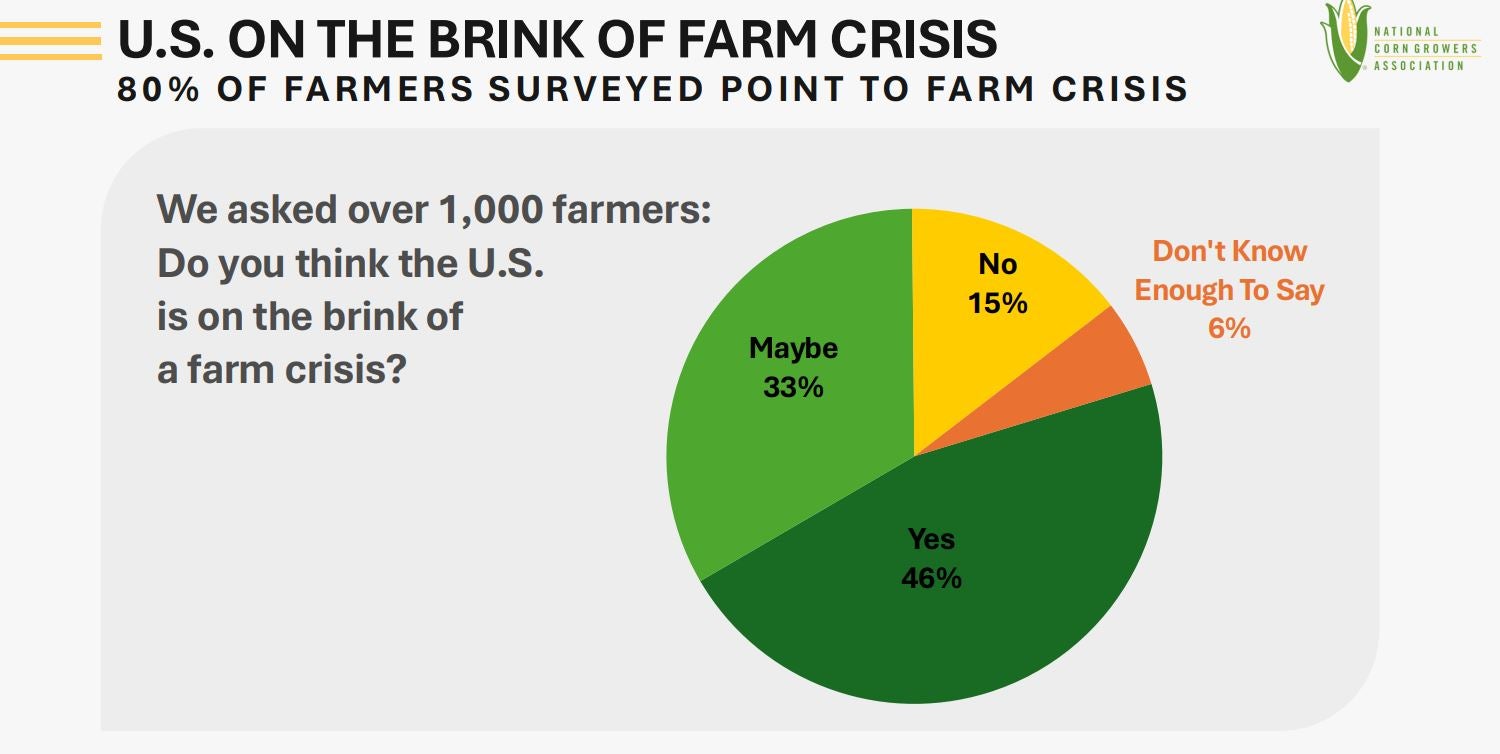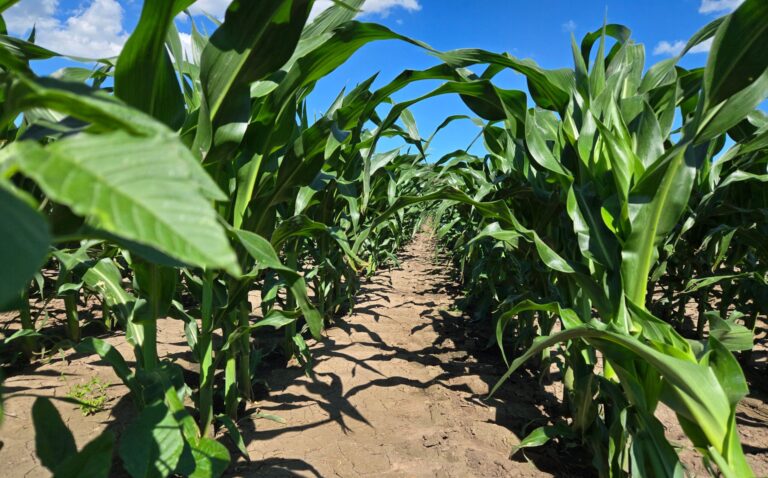If you’ve been wondering about the state of the American farm economy, the perception among corn growers is that it is already in crisis … or, at best, may be on the brink of one. That was the major takeaway from a new survey released by the National Corn Growers Association.
The feelings that emerged in the NCGA survey closely mirror the findings in the monthly Purdue University/CME Group Ag Economy Barometer Index, which has seen farmer sentiment across all crops falling for the third straight month, particularly as questions remain about how to fill the gap left in the trade market by China this growing season.
NCGA leaders told Congress during an economic roundtable that it could alleviate some of the pain by passing the Nationwide Consumer and Fuel Retailer Choice Act of 2025, which would remove a provision in the Clean Air Act that restricts the summertime sales of fuel with 15 percent ethanol blends, often referred to as E15.
“Farmers are in a lot of economic pain right now,” said Illinois farmer and NCGA President Kenneth Hartman Jr. “It’s a four-alarm fire in the countryside, and we need members of Congress to act fast to remove barriers to markets. Passing legislation for the year-round, nationwide sale of higher blends of ethanol would be an important first step in addressing this problem.”
A study released this week by the NCGA, showed that, at full adoption, providing consistent access to E15 year-round would provide an additional $25.8 billion to U.S. gross domestic product, boost incomes by $10.3 billion, support 128,000 additional full-time jobs and provide a home for some excess corn crops at full adoption.

The findings come as farmers face the largest three-year decline in net cash receipts in history because of declining crop farm profitability associated with lower prices and elevated input costs. On top of that, the U.S. Department of Agriculture is projecting record crops this year.
The USDA is also forecasting a 2025-26 season average corn price of $3.90 per bushel, which falls well below estimated break-even levels for U.S. farmers. Soybeans are in the same situation at an estimated price of $10.10 per bushel.
A total of 1,034 corn farmers were surveyed from Aug. 28 to Sept. 10, and nearly half (46 percent) indicated that they believe the United States is on the brink of a farm crisis. Additionally, 80 percent of those surveyed indicated they believe the farm economy may be or “is” on the brink of a farm crisis. And 65 percent said that they are more concerned about their farm financials now than they were a year ago.
In what could be a troubling sign for the larger economy, those surveyed indicated that the top changes they were considering making next year would be holding off on equipment purchases, reducing fertilizer applications and looking for options to increase off-farm income.
“These findings point to a once-in a generation problem for the agricultural economy,” said NCGA Chief Economist Krista Swanson. “The survey findings suggest that this crisis could have a long reach, affecting every area of the economy, as farmers are less likely to make purchases and will certainly make budget cuts that could affect their local communities.”


:max_bytes(150000):strip_icc()/Iowa-State-Fair-Banner-d22e8c0989b142aabefb048e52d85521.jpg)








:max_bytes(150000):strip_icc()/2210-08-097_wheat-269350b0a9c64faa985d0ba927488669.jpg)
